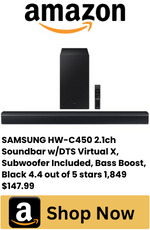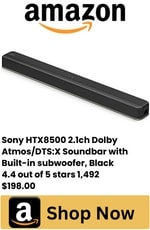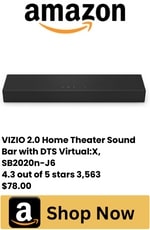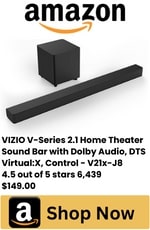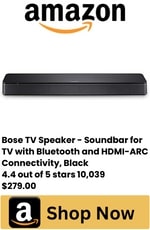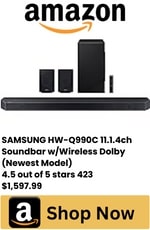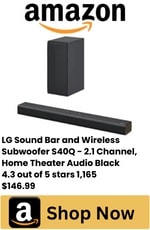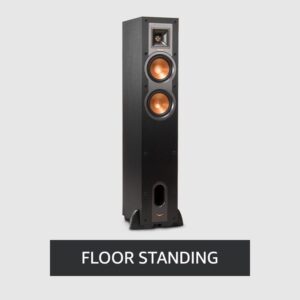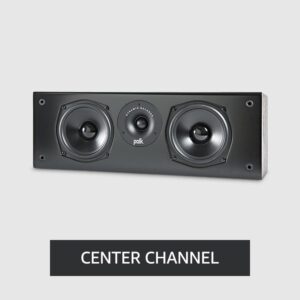ScreenX vs IMAX: Comparing Cinematic Experiences
In cinematic wonders, two titans, ScreenX and IMAX, vie for the coveted title of delivering unforgettable movie experiences. As moviegoers, we’re all passionate about the technology that wraps us into a world beyond the screen. So, let’s dive into the depths of these cutting-edge formats and uncover which one truly reigns supreme.
Table of Contents
IMAX: Where Immersion Knows No Bounds

IMAX stands for “Image Maximum,” it lives up to its name by employing top-tier cameras, projectors, and sound systems to craft a movie spectacle like no other. It boasts a colossal screen that draws us into scenes with stunning vivacity.
When you step into an IMAX theater, the immersive magic takes hold. The screen, measuring 52 feet in height and 72 feet in width, envelops your senses, making the movie leap to life. You’ll find yourself at the heart of the action as images pop out from the screen, seemingly within arm’s reach. The 12-channel surround sound system transports you further into the cinematic realm, ensuring you’re part of the adventure.
ScreenX: A Panorama of Cinematic Thrills

On the flip side, ScreenX, brought to us by CJ 4DPLEX, brings a unique twist to the movie experience. Unlike IMAX, which engulfs us in a single grand screen, ScreenX combines a standard center screen with meticulously projected visuals on the sidewalls. This symphony of imagery results in a 270-degree visual panorama, sweeping us into the world of the movie.
Imagine watching a car race on the central screen while pavements, buildings, and intricate details grace the side walls. This immersive illusion lets you bask in the cinematic universe from multiple angles, fostering an enveloping connection to the story.
Comparison Of ScreenX vs IMAX
| Comparison Parameters | ScreenX | IMAX |
| Technology | Multi-projection technology using 5 projectors | Premium cameras, projectors, and sound systems |
| Screen Configuration | Center screen with images projected on sidewalls | Giant screen with integrated images |
| Screen Size | Standard size center screen with extended sidewalls | Big screen (e.g., 52×72 feet) |
| Display Format | 270-degree panoramic view | Wide and tall format, more significant than standard |
| Display Quality | Good quality with immersive side projections | Unmatched clarity, vibrant colors |
| Sound System | Standard audio | 12-channel immersive sound system |
| Seating Arrangement | Rows facing the screen | Comfortable padded seats at optimal height |
| Availability and Cost | Fewer theaters, around $30 per ticket | More theaters, around $20 per ticket |
| Movie Compatibility | Limited to movies formatted for ScreenX | Wide range of movies from various genres |
| Filming Process | Requires three cameras for filming | Requires IMAX-certified cameras for filming |
| Immersion Experience | 270-degree panoramic effect | Immersive experience with larger images |
| Aspect Ratio | Varies based on screen placement | 1.43:1 or 1.90:1 recommended |
| Supported Chains | Cineworld, Regal, B&B | AMC, Marcus, Regal, B&B |
| Countries | Available in 37 countries | Available in 80 countries |
| Screen Size Record | World’s biggest in Spain seats 400 | TCL Chinese Theatre, Hollywood, seats 900+ |
| Notable Movies | Top Gun: Maverick, Spider-Man: No Way Home | Avengers: Endgame, Dune, Marvel films |
| Overall Experience | Panoramic immersion with some limitations | Large, vivid display with immersive sound |
| Conclusion | Growing appeal with potential; around $30 | Established choice with widespread availability; around $20 |
Diving into the Nuances: Technology at Play
IMAX and ScreenX are built upon different technological foundations. IMAX harnesses dual 4K or 8K projectors, seamlessly merging horizontal and vertical images for a distinctive visual impact. In contrast, ScreenX employs five projectors to bring its panoramic vision to life. Hardware and software synergize to create a 270-degree viewing field, a captivating departure from the norm.
Screen Display and Visual Grandeur

The visual canvas of these formats sets them apart. IMAX boasts a single sprawling screen that commands attention, while ScreenX weaves its magic by blending a central screen with meticulously crafted projections on the sidewalls. The result is a panoramic spectacle that envelops audiences, creating an intimate connection with the story unfolding before them.
The Immersive Encounter: Viewing Experience
The viewing experience in IMAX immerses viewers head-on, with the narrative unfolding in captivating 3D splendor. ScreenX, on the other hand, envelops audiences from all angles, letting them bask in the visual panorama. The choice is between a front-facing immersive encounter (IMAX) and a more all-encompassing visual journey (ScreenX).
Content Compatibility and Filmmaking
When it comes to content, IMAX boasts versatility, accommodating a wide array of films, both specially formatted and regular. On the contrary, ScreenX mandates movies to be shot and edited in their specific format to harness their immersive potential fully.
Filmmaking for both formats follows distinct paths. IMAX requires unique cameras for optimization, while ScreenX uses three cameras to capture its unique perspective.
Display Quality and Audio Enchantment
The display quality of IMAX is a marvel, with impeccable clarity, vibrant colours, and unparalleled brightness. While ScreenX holds its ground in display quality, IMAX’s specialized film formats, projectors, and cameras give it an edge.
In sound, IMAX outshines with its 12-channel sound system, precision-positioned speakers, and immersive audio technology. ScreenX focuses primarily on visual immersion, with audio akin to standard cinemas.
Related: Cinemark XD vs IMAX
Seating Comfort and Availability
IMAX theaters offer comfortable padded seating, ensuring an unobstructed view for every patron. ScreenX arranges its seats in rows, providing comfortable viewing with a front-facing perspective.
Regarding availability, IMAX has a global footprint, boasting over 1,500 theaters across 80 countries. In contrast, ScreenX is growing and available in fewer places—316 theaters in 34 countries.
Ticket Pricing and Film Preference
In the cost realm, IMAX is a more affordable choice, with tickets around $20, making it accessible to a broader audience. On the other hand, ScreenX tickets, at approximately $30, come at a premium.
Regarding film preference, IMAX welcomes an extensive range of genres, adapting seamlessly to diverse narratives. ScreenX is limited to movies formatted in its unique style.
5 Intriguing Insights About Large Format Cinemas
Exploring cinematic wonders, we delve into the fascinating world of large-format cinemas, uncovering five captivating facts that shed light on these immersive experiences. These insights, from the towering screens to the cutting-edge cameras, glimpse the magic behind the scenes.
Related: ScreenX vs 4DX
1. Grandeur of Dimensions:
Large format cinemas, epitomized by giants like IMAX and ScreenX, are defined by their colossal screens extending beyond conventional movie theaters. These screens, towering to remarkable heights and widths, envelop viewers in a visual spectacle that bridges the gap between reel and reality. The sheer magnitude of these screens elevates the cinematic journey into an unforgettable adventure.
2. Cinematic Prowess of Cameras:
Behind the scenes, large-format films are captured by specialized cameras that capture every nuance in mesmerizing detail. In the case of IMAX, the magic lies in using certified cameras. These cameras, notably larger and louder than their traditional counterparts, are designed to capture action sequences with unparalleled finesse. For ScreenX, three cameras work in tandem to create the panoramic perspective, lending a new dimension to filmmaking.
3. Diverse Camera Choices for IMAX:
Within the realm of IMAX, filmmakers have an array of high-caliber cameras. These include the likes of the 4.5K Arri Alexa LF and Mini LF cameras, the 8K Panavision Millennium DXL2 camera, and the 6.5K Arri Alexa 65 IMAX camera. These camera choices underscore the dedication to delivering stunning visuals that resonate with audiences profoundly.
4. Cinematic Triumphs:
The influence of large formats on the box office is undeniable. Top Gun: Maverick soared to unparalleled heights, grossing $60 million through ScreenX theaters alone, while Avengers: Endgame raked in an impressive $150 million through IMAX screenings. These figures highlight the compelling draw of large format cinemas, where the immersive experience entices audiences to embark on cinematic journeys like never before.
5. Availability and Future Growth:
While the debate between IMAX and ScreenX continues, it’s noteworthy that IMAX holds a more comprehensive global presence, with over 1,700 screens spanning 80 countries. On the other hand, ScreenX is steadily expanding its footprint, boasting 364 screens across 37 countries. As technology and audience demands evolve, both formats continue redefining how we experience movies.
| Pros of ScreenX | Cons of ScreenX |
| 1. 270-degree panoramic screen view | 1. More expensive ticket prices |
| 2. Often paired with 4DX for enhanced experience | 2. Limited availability compared to IMAX |
| 3. Some Disney films optimized for ScreenX | 3. Generates lower profits compared to IMAX |
| 4. Expanding the number of screens globally | 4. Panoramic experience can be overwhelming |
| Pros of IMAX | Cons of IMAX |
| 1. Larger screen size than traditional cinemas | 1. Films must be shot in IMAX format |
| 2. Special cameras optimize films for IMAX | 2. Limited duration for showing new films |
| 3. Tickets are not significantly more expensive | 3. Some theaters advertised as IMAX are not true IMAX |
| 4. Wide availability with numerous screens | 4. IMAX 3D may sometimes be less convincing |
Conclusion
In the comparison between ScreenX and IMAX, individual preferences are better choices. ScreenX offers an immersive 270-degree panoramic view, best suited for those who crave a unique and encompassing experience. IMAX, renowned for its unmatched display quality and diverse movie selection, appeals to those seeking exceptional visual and auditory immersion.
While ScreenX introduces innovation and an all-encompassing view, IMAX boasts superior visuals and sound. The decision hinges on whether you prioritize novelty or top-notch quality. As both technologies evolve, it’s wise to experience both firsthand to determine which aligns better with your cinematic tastes. Ultimately, the “better” option depends on your preferences for the ultimate movie experience.
FAQs About ScreenX and IMAX Cinemas
1. What is the main difference between ScreenX and IMAX?
ScreenX utilizes multi-projection technology with 5 projectors, projecting the main image on the center screen while extending details to sidewalls for a 270-degree view. IMAX features a massive integrated screen with premium cameras and projectors, offering an immersive, larger-than-life cinematic experience.
2. Which one offers better display quality?
IMAX leads display quality with its unmatched clarity, vibrant colors, and specialized equipment. While ScreenX offers a good-quality extended image, it may not compete with the visual precision of IMAX.
3. Are these formats widely available?
IMAX holds the advantage in availability, with more than 1,500 theaters in 80 countries, offering viewers a wide range of movies. ScreenX is available in fewer theaters (around 316) and countries (37), limiting options for those seeking this experience.
4. What is the cost difference between the two formats?
ScreenX generally comes at a higher cost, around $30 per ticket. On the other hand, IMAX offers a more affordable option, with tickets priced around $20, making it a budget-friendly choice for enhanced movie viewing.
5. Can any movie be enjoyed in these formats?
IMAX accommodates a wide range of movies, providing an immersive experience for various genres. In contrast, ScreenX is limited to films specifically formatted for this technology, potentially limiting the movie choices available in this format.

Author: Baqarrasheed
I know all about home theater items! I have been doing this for more than three years now. I am good with things like sound systems, TVs, projectors, and all that cool entertainment gear. I like to help folks by testing and talking about these gadgets on Hometheaterjournal. I want to make sure everyone can create an awesome entertainment setup at home without any confusion.
I write the creative content for HometheaterJournal.



